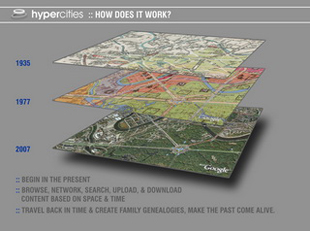
Introduction to Digital Humanities
If you are new to the field of digital humanities, you may not know much about digitizing history through projects like ours. So before you dive into creating your own digital history project, explore the links we've provided below. They will help you to understand the context of digital history and digital spatial history. Don't reinvent the wheel! Even if you are fairly experienced with the field of digital humanities, the essays are contemporary and scholarly and will be worth your while. Also, make sure to spend some time exploring the different interfaces and purposes of geospatial portals and digital humanities projects.
Essays about Digital Humanities
These essays, blogs, and discussions about digital humanities are a helpful introduction to the rapidly evolving field of digital humanities and will provide a broader context for the "Driving Through Time" project.
Digitization and Digital History
Many libraries and archives have begun digitizing their holdings, making available online those items that could previously be seen only onsite. At DocSouth, digitization has played a key role in allowing researchers to utilize the abundant resources of the UNC Library system for their scholarship. This section links to information about digitization at UNC's Digital Production Center, and projects at UNC that have displayed these digitized materials in unique ways
Geospatial Portals
Geospatial portals use maps to display information about an area.
Examples of Digital Humanities Projects
The combination of geospatial referencing and digitization of historic documents creates a visual database for study and research. Documenting the American South's "Going to the Show" project is an example of a digital humanities database—it provided much of the groundwork for "Driving Through Time." Check out these examples of digital spatial history.




